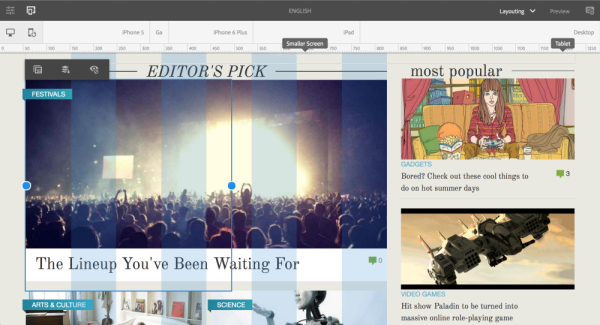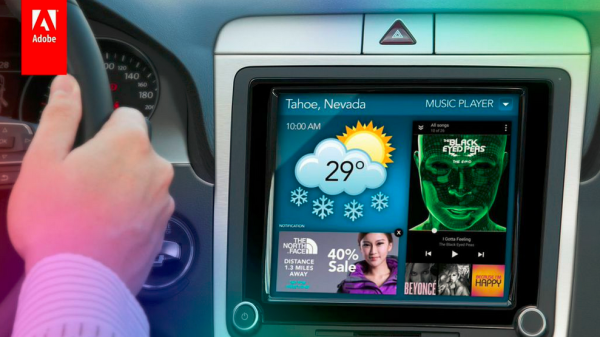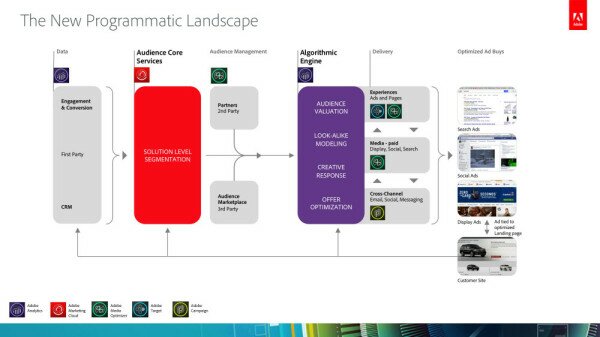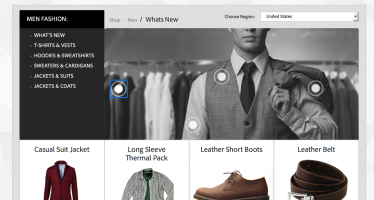Adobe Takes Digital Experiences to Next Level: IoT, Email, Mobile, Analytics & Lots More
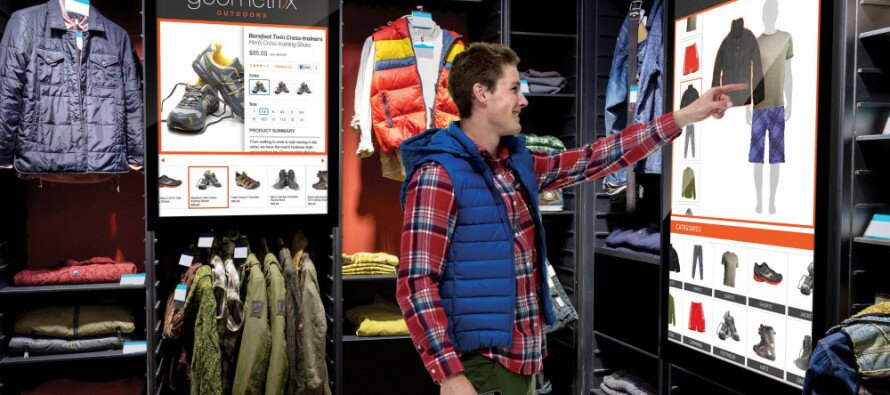
I think it’s important to step back for a minute and remember two very important things before we start talking about Adobe.
First, the digital experience market is extremely young, even though many have been involved in it one or or another for a long time. It’s no where close to being mature and the strategies and technologies we are all struggling to get our heads around are evolving daily. That makes it a very exciting market to be involved with, but also kind of scary, because just when you think you are finally getting a handle on something, it changes.
Second, Adobe is very young. Technically it isn’t. It’s been around forever in the creative sphere particularly. But I think back (and really I’m not going that far back), to when I first started writing about this space, when I left my full-time IT consulting position so I could spend all my time learning about the web content management and enterprise collaboration markets, when SharePoint was the game everyone wanted a piece of, and Adobe was only just beginning to make take its position in the market.
Think about it, it was 2009 when it acquired Omniture, and 2010 when it acquired Day Software. It was 2010 when we all started really talking about web experience management and it was 2011 when Adobe announced its “web experience management suite” and “online marketing suite.”
The path from brochure-ware websites to database-backed websites to personalized websites to mobile experiences and email marketing, to marketing automation and marketing clouds, to a list of technology vendors all fighting to take their place in this crazy digital experience market – holy crap it has happened fast. And as fast as this market has evolved, so too has Adobe.
Adobe Product News Cross All Bases
Which leads us to the TONS of news they have announced today, the first official day of the Adobe Summit in Salt Lake City, Utah. Truth? It’s not tons, but it’s a lot and it’s clear that there is a reason Adobe claims the customer base it does, there’s a reason it sits at the top of every analyst wave, magic quadrant, and other report. Adobe is always taking the next step, advancing the digital experience space forward.
In a conversation with Loni Stark – Senior Director of Strategy and Product Marketing, Adobe Experience Manager, someone I always love to talk with because she knows her stuff (wanted to say shit here, but don’t like to offend), I got a high level view of what’s new, and I’m going to share that with you:
Adobe breaks its news down into four key themes: IoT (Internet of Things), Mobile, Advertising/Marketing, Partnerships.
The Future of IoT is Now
I read Altimeter’s take on the Internet of Things and I summarized some of the key points in my InsideCXM industry column. The fact is, IoT is the future, but that future is here now and organizations are doing some pretty interesting things with it. So for Adobe to announce its own take on IoT is not a surprise. Adobe Experience Manager gets some new screens that enable it to bring the digital experience into the physical world, whether it’s in a retail setting, hotel or some kind of machine. So imagine you’ve done some shopping for that outfit for your friend’s wedding online, but now you want to get into the actual store and try something on. Imagine a big screen that can show what you’ve already looked at, provide suggestions for accessories or colors that match what the store has in stock. Imagine having all the information to better target marketing to you going forward. Stark provides another great example related to car shopping in .
In addition, new mobile analytics capabilities allow an organization to get a better look at how customers are moving around physical stores. Things like dwell patterns, time spent in certain locations, how often customer interact with push notifications and messages sent through iBeacon. All this will provide the data that helps improve the physical customer experience.
Also IoT related, Adobe Target can do testing and optimization and provide personalized content across devices that aren’t web and app based. Think Apple iWatch and other wearables, and then go even further and think other machines you use every day, like ATMs and your car dashboard.
Mobile Experiences
Let’s talk mobile experience now. Adobe is huge on mobile apps, and they’ve done the work to provide marketers with easier ways to create mobile apps and the content they require. So it makes sense the next phase is to go even further with mobile apps in the Marketing Cloud. Stark told me that customers need to look not just at how to implement mobile experiences today, but to get into digital experience for the long haul, meaning they need to transform the idea of what they can and should do with all these connected screens. Mobile, Stark noted, is the boot camp for IoT.
And to that end, Adobe now enables marketers to manage the complete lifecycle of their mobile apps, from app development, to user acquisition, app analytics, and user engagement. Here we’re looking at real-time insights into how apps are marketed and used, integration with location-based technologies, particularly iBeacon, richer analytics leading to better insights and actions, and of course, the ability to ensure that the right content is offered continually. New partnerships with companies such as Vibes, ionic, Fiksu, Kochava and more help Adobe take its mobile app offering to the next level.
Advertising and Marketing Tech Converge
Stark said that paid media has been siloed, and it’s a big problem. Adobe resolves the problem through Media Optimizer. From a new algorithmic core engine, to advanced audience core services and a new audience marketplace, marketers can improve paid media programs. Audience core services allow you to pull together more data in new ways to get a better view of your customers and prospects. The Audience Marketplace provides additional anonymous third party data to enrich audience profiles, and orgs can buy, sell and share their own anonymous first-party data.
The new algorithmic engine allows marketers to focus on the rules and strategies for a campaign (or whatever activity they are working on), and let the algorithmic engine figure out the best way to deliver it across all channels.
Partnerships and Marketing Cloud Expansion
There are now eight solutions in the Marketing Cloud with today’s announcement. Joining Campaign, Experience Manager, Analytics, Social, Media Optimizer and Target are two new services: Audience Manager and .
Adobe Primetime supports the optimization, management and monetization of videos. Video publishing, advertising and analytics are all integrated to ensure that organizations can capitalize on the high demand for video. And Adobe Audience Manager is the profile store for all audience data, consolidating audience information from all sources.
Finally, Adobe announced Campaign Standard, which is a tight integration between Campaign and the rest of the Marketing Cloud. Stark said that recent research shows that marketers are frustrated by siloed email marketing and a real lack of integration with other key marketing technology. Adobe Campaign Standard eases these frustrations in three ways:
- It now natively integrates with the rest of the Marketing Cloud
- It is built for email marketers who want to do more with email than pump out boring email campaigns (see some of the new capabilities here)
- It’s touch and mobile friendly
The new partnerships announced today include one with IBM; IBM is building an interactive experience services practice around Adobe Marketing Cloud and looking at integration between AEM and IBM Commerce. Another is with Accenture Interactive, who is building a pay-per-use digital marketing service on top of the Adobe Marketing Cloud. Also, there were other new partnerships noted with providers such as Razorfish, Gigya, SapientNitro and more.
Ending the Age Old Debate
I want to end on something that Stark talked about towards the end of the briefing – the simplicity and power of an integrated experience. As we continue the age old debate on best of breed (or best of need) versus Suite, we are really starting to see technology that is built to offer both. In Adobe’s case there has been a lot of work integrate the product experience, particularly with Adobe Experience Manager, but with many other vendors we also see the opportunity for organizations to leverage existing technologies or take on new ones in a more integrated experience. I don’t think we can realistically say one approach is better than the other. I think the best answer is that it depends on the organization and where they are in their digital transformation.
Sometimes the effort required to make things work together isn’t worth the time and effort when there’s something just as good (or better) on table already ready to serve. Sometimes what’s on the table isn’t exactly what you want, but it gets the job done in a way that allows you get moving. Later, when you have more experience, more understanding under your belt, you can consider other options.
The key is to figure out what technology is going to help you get there quickly, because that’s how fast you need to go.
The Digital Experience Market is Ripe With Great Technologies
I’m not a fan girl. I don’t sit back and help a vendor brag its products/services just for the fun of it. I don’t think every organization is ready for what Adobe brings to the table. I think there are other platforms out there that are doing amazing things – Sitecore, Acquia, Hippo, just to name three. For every need, there is a technology, and I’m the kind of person who could spend all day learning about every one of them and find something I liked (and something I didn’t like). Every organization must go through a digital transform to make it in today’s customer-first, always on world, but they are going to approach it in different ways, at different scale and with different technology. And it’s amazing to see how they are doing it.
I hope that this site can grow to the stage where it can offer this view of digital experience technology, a place for marketing technologists to learn how different technology works (both strategically and technically).
Share and Enjoy
Related Articles
Forrester Wave for Web Analytics is Out, Some Question Its Accuracy
Forrester releases its Wave for Web Analytics Q2, 2014, taking us through the six providers that they believe matter the
Share and Enjoy
Adobe Campaign Integrations Take Personalized Experiences Further
Adobe kicks off a new year with key integrations for Adobe Campaign. Kerry Reilly, Director of Product, Adobe Campaign walked
Share and Enjoy
Big Opportunities in the Drupal, Developer Job Market Overall,
The Drupal Association conducted a survey earlier this year, trying to get a picture of the current state of the


